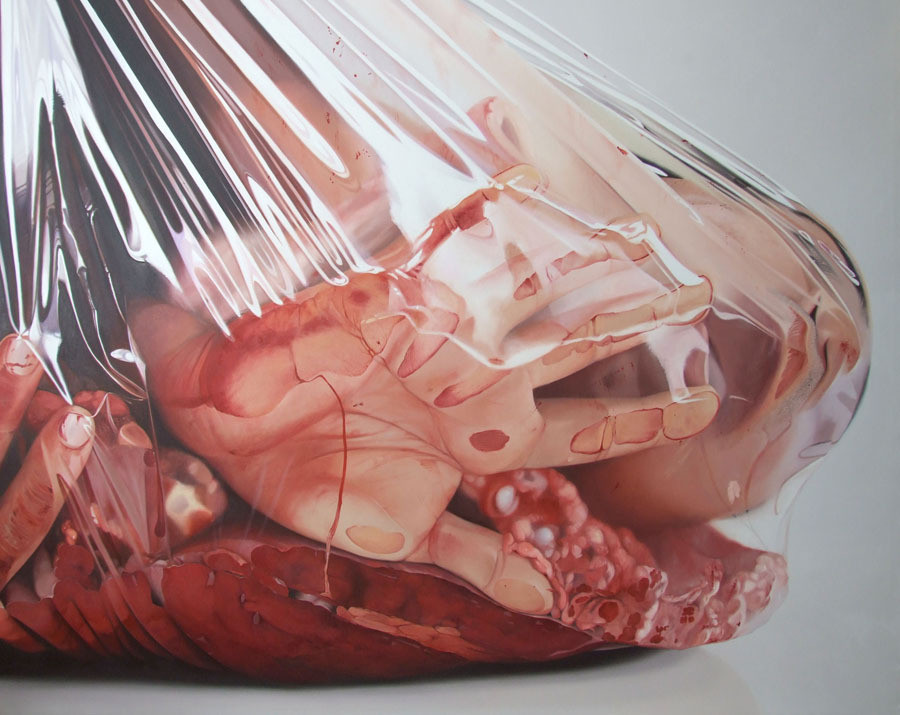We're not sure exactly what it is that we're looking at here, but we can't look away. Pristine plastic baggies pumped with innards and guts dangle mysteriously from a white string against a crisp white backdrop. Is this a chef formulating his next meal? A scientist, potentially a mad one, prepping an experiment? Is this a Patrick Bateman situation we're dealing with? Whatever it is, we can't take our eyes off it, for better or worse.

We have Salvador, Brazil-based artist Fábio Magalhães to thank for these simultaneously transfixing and nausea-inducing images. His hyperrealist series, "Intimate Portraits," depicts bodies as we've never seen them before -- hopefully -- turned inside out, mashed up, gushing juices. To create each haunting depiction, Magalhães arranged animal guts in his studio and photographed the result, then translating the image onto canvas with oil paints.
Yet the disturbing images raise more questions than they answer: Are these innards human, animal, or both? What happened to their owners? But eventually any attempting at grasping a narrative crumbles before the magnetic precision of the images themselves. "Although my work has this intimate characteristic, in a theatrical scene of a particular reality, in my practice, my narrative is open," the artist explained to Celeste Wanner. "It tackles the common sense: they are feelings, moments and human emotions of any person."
Most of the hyperrealistic artworks we encounter depict human faces or unassuming still lifes, images we've seen before and thus can process as actually being realistic. Magalhães toys with the formula, presenting realistic images of something most of us have never actually seen. The grotesque visual feast captures the body at its most inhuman, resembling meat more than a human being. In this sense, Magalhães delivers abstraction with the same hand as realism. And yet the bodies' hygienic presence, postured in the center of a frame, suggest the art historical trope of the portrait.
This space between the hidden and the revealed, the recognizable and the horrific, is right where Magalhães gets comfortable -- or, perhaps, uncomfortable. "Through its anatomy, this sealed body, sacred, hidden, was already enough to determine each kind of being, and nothing else," Wanner explains. "Its psychological and erogenous dimensions – both connected to pleasure and desire – bring a new semiotic amount, of recent discovery in researches about the body."
We could spend all day postulating possible motivations behind Magalhães' morbid anatomy. But one thing is for certain: we agree with Gabriela Motta when she wrote: "This is an artist that does not tire of observing the hidden side of his own image." Take a look for yourself and let us know your thoughts in the comments. Be warned, it gets weird down there.







